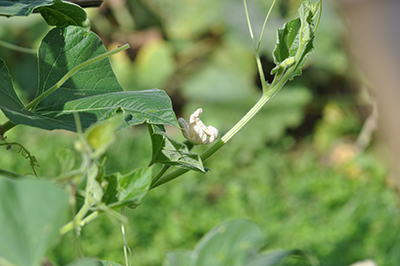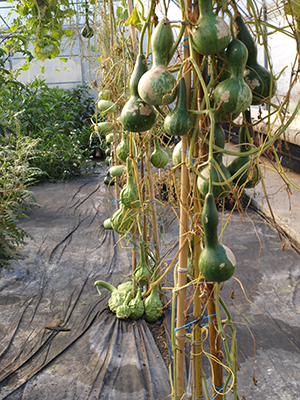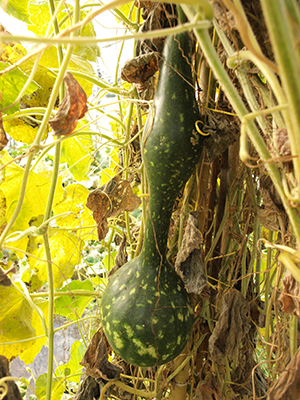Lagenaria siceraria (Molina) Standl.














| ENG | Birdhouse bottle |
| SK | Indická uhorka |
| CZ | Indická okurka / kalabasa |
| PL | Tykwa pospolita /kalebasa |
| HU | Lopótök |
Using
Fruits of species L. siceraria are cultivated and eaten as a vegetable. The fruit must be harvested at a young stage of development to be edible. When the fruit is fully ripened, it is very fibrous. In the fresh state it contains about 95% water, 0.6% N, 0.1% fat, 3% saccharides, 1% pulp and 0.5% fibre content. From the vitamins there are A, B1, B2 a C. As they are high in minerals and fibre, low nutritional value, they are suitable for low calorie diets for diabetics. In the mature phase they are used to clean rice, carry water and as food containers. Smaller sizes are used as bowls to drink palm wine.
| I. | II. | III. | IV. | V. | VI. | VII. | VIII. | IX. | X. | XI. | XII. | |||||||||||||
| Sowing (greenhouse) | ||||||||||||||||||||||||
| Sowing (field) | ||||||||||||||||||||||||
| Planting | ||||||||||||||||||||||||
| Harvest | ||||||||||||||||||||||||
Botanical description and occurrence:
The bottle gourd is a vigorous, annual, running or climbing vine with large leaves and a lush appearance. It grows fast and may begin to flower only 2 month after seeding. The foliage is covered with soft hairs and has a foul musky odour when crushed. Leaves have a velvety texture because of the fine hairs, especially on the under surface. The bottle gourd flowers are borne singly on the axils of the leaves, the males on long peduncles and the females on short peduncles. The flowers are white and attractive. Flowers bloom at night, and hand pollination often improves fruit set.
Why to have the plant in your garden:
The fruit is the main attraction. Bottle gourds are extremely variable. They may be round, cylindrical or flask-shaped, sometimes with bulbous distensions. The green skin may be smooth or hairy and matures to pale gold or brown. When fully mature they are very hard. The shell of well-ripened fruits is very hard and can be used for many purposes such as bottles, bowls, musical instruments etc.
Text:
Dr. Erika Mňahončáková, Botanic garden Slovak University of Agriculture in Nitra, SR
Photo:
Dr. Erika Mňahončáková, Botanic garden Slovak University of Agriculture in Nitra, SR
Dr. Ján Mezey, Slovak University of Agriculture in Nitra , SR

